HISTORY
History of Hajdúböszörmény
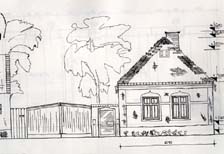
The name of our town, "Böszörmény" was a noun in the old Hungarian language and it meant Muslim, the believer of Islam. Böszörmény was the center of the Nyírség Muslims. The village was destroyed during the Mongol Invasion. It was repeopled in the 12th and 13th centuries and became a part of the Debrecen domain between 1290 and 1322. The town became market-town in 1325. It received the "oppidium" title in 1410, under the reign of King Zsigmond.
As the part of the Debrecen domain it passed into the property of György Brankovics, then the Hunyadis and later, at the beginning of the 16th century the Báthori family. The development of the town was blocked after 1552, when the Turkish Empire occupied Hungary. The famous structure of the settlement practically took shape by the 15th century. Later the hajdús (heyducks) took it over and applied to the newer requirements of the military town.
The prefix "Hajdú" in the name of Hajdúböszörmény relates to a herdsman ethnical group, that evolved in the last decades of the 15th century according to the large-scale stockfarming and trading. Beside the shepherding these people were experts in handling of weapons as well. At the end of the 15th century their position became critical because of the law on cow-export. The hajdús were in danger existentially and didn't want to fall back into serf-position, so they organized their irregular troops. At the beginning they were only shepherds, but they gradually became herdsmen-soldiers and from the second half of the 16th century the name hajdú definitely meant a soldier profession.
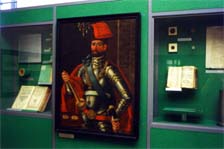
They payed their most important historical role in the war of independence by the side of István Bocskai. Their participation in this fight determined not only the outcome of the revolt but the future of the hajdús as well. After winning the fight at Álmosd Bocskai settled down the hajdús and with his Charta he raised them into the nobility on the 12nd of December 1605.
Beside the ennoblement he donated lands like Kálló, Nánás, Dorog, Varjas, Hadház, Vámospércs, Sima, Vid, but Böszörmény.
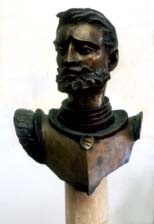
Because the hajdús were in permanent fight with the austrian imperial army, Gábor Báthori, the Prince of Transylvania settled them from Kálló to Böszörmény with his new Charta on the 13th of September 1609. When the hajdús moved in Böszörmény, the social and economic life of the town changed radically. The town got out of the feudal dependence, but in return for the priviliges its inhabitants had to serve as soldiers. At the end of the 17th century, when their priviliges were in danger, the hajdútowns became allies. They established the Hajdú District, and Böszörmény became the residence of the district. With the decrease of the military importance a change in the lifestyle took place in the town. The former soldier-hajdúfarmers developed into peasant-citizens.
With the commanding of Gábor Sillye, the Commissioner of the Hajdú District the descendants of the hajdús played a great role in the fights of the revolution in 1848-49. After the Hungarian-Austrian Settlement of 1867 the Hajdú District was expanded in territory and thus formed into Hajdú County in 1876, and Debrecen became the center of it. Because of the low level capitalist development in the industry and trade the economic structure of the town remained agrarian in the second half of the 19th century. The society of Hajdúböszörmény stratified further. Capitalist citizens and industrial workers appeared beside the prosperous peasantcitizens, smallholders and landless people.
The two world wars caused huge casualties and big damages in the buildings of the town. After the 2nd world war the co-operation in the agriculture, and then the settling of industry in the 1960-70s transformed the structure and the aspect of the society of Hajdúböszörmény.
History of religion
There were several confessions living together in Hajdúböszörmény through centuries. The first documents are about the Roman Catholics. The papal tithe-memorandum of 1332-37 lists our town among the larger settlements, it had a parson and a church.
Because of the expansion of protestantism the catholic church was forced back. There was even a period when there was no catholic parsonage in the Hajdú-towns. Later the roman catholic church got strong again. The church on the Újvárosi street was built in 1863. The olders of the inhabitants still use the expression "russian side" which meant those streets where the greek catholics lived in majority. In Hajdúböszörmény there are a lot of greek catholics in comparison with the number of the population. They built several churches, which shows the strength and the greatness of their confession. The two-towered church was built in 1893, though it remained just in parts because it had to be pulled down in 1983. The new building was consecrated in 1988.
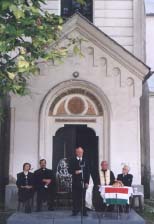
Our town is a characteristically calvinist settlement. At the last official count of population, when the religious affiliation was asked as well, 25.000 inhabitants declared themselves reformed. The community had a priest even before settling the hajdús. The town and the Protestant Grammar School gave a lot of talents to the Hungarian church history (Dezső Baltazár - bishop of our region, Imre Bertalan - bishop of the Hungarians living in America, Kálmán Göndöcz - bishop in Canada, Mihály Bucsay - church historian). The church on the Bocskai square got its shape in 1882 and the other one on the Kálvin square was consecrated in 1899.
The first documents about the local jews originated from the beginning of the 19th century. The synagogue on the Kassa street was built in 1863. There were 653 victims of the Holocaust in Hajdúböszörmény. The first note about the baptist confession is from 1887. Their bethel was built in 1895. The Baptist Asylum was built in 1910. There are several smaller churches working in our town like the Seventh Day Adventist Church, the Belief Congregation, the Jehova's Wittnesses.
History of economy and industry
Böszörmény received the "oppidium" title (market-town) in 1410, under the reign of King Zsigmond. By the examination of names found in the census of the 16th century our town was a medium developed market-town with some handicraft industry.
After settling the hajdús in Böszörmény in 1609 a new chapter began in the life of the town. The military service and the lands got for the priviliges provided safe living. The important parts of the hajdú ground were the building site (inner plot) and in addition, the garden outside the moat. The house was the only thing standing on the inner plot. The scene of the agricultural activity was the garden (see Settlement structure). The land in the outer area of the town, which was of high quality and excellent for cultivating and pasturing, assured the living of the population. In this period the serfdom without hajdú-privileges worked as handicraftsmen. When the military-political importance of the town started to decline, the soldiers of the population gradually became free peasant-citizens, who lived by stockbreeding and cultivating.
From the end of the 17th century the livestock, the basic economic force, suffered serious losses because of external factors like Turkish reign and fights against the Habsburgs. Beside the immense destruction of the goods the population significantly decreased as well.
From the 1720s the political and economic instability ceased and a process of stabilization begun. During the 18th century the population got by mostly stock-breeding. They bought the cattles at spring, fed them up and sold them at autumn, thus making profit. The exchange of the goods took place in the markets and fairs, however, the shops, the slaughterhouses and the taverns took more and more important part in the tradelife of the town.
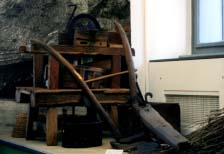
At the beginning the handicraft accomodated itself to the agriculture because the industry made its products only to supply the local needs. Beside this the agricultural activity always played a great part in the living of craftsmen.
The first guildformations in the 18th century were organized following the pattern of the guilds in the Upper Hungarian towns (Kassa, Bártfa) which had an excellent handicraft tradition. The taylors' guild, the smiths-locksmiths' guild, the smiths-wheelwrights' guild and the millers' guild were the most significant guilds.
The structure of animal breeding had changed in the 19th century. Beside the profit deriving from progeny the farmers started to use the power of animals and get profit from milk, etc. At the same time the peasants layed special emphasis on cultivating in farming. Its most important part was to increase cultivated lands at the expense of hay-producing lands. Most of the lands were sown with cereals. The duality of inner plot and garden probably ceased in this period. The farmers started to build their houses in the spacious gardens instead of the narrow inner plots. The houses and farms in the outskirts got the functions of gardens. The trade and industry still supplied only the local requirements. The guild system disappeared in 1872, the industrial societies replaced it. It's remarkable that Hajdúböszörmény realized the importance of building roads and railroads. In accordance with it the Debrecen-Hajdúnánás railway line was built at the end of the 19th century with serious investments of the town.
The number of the craftsmen gradually increased at the beginning of the 20th century but their productivity was still adjusted to the demands of an agrarian town. In accordance with the technical development both in industry and in trading the professions became more specialized. Beside the traditional peasant tools in the agriculture harvesting and threshing machines became more important. The structure of the peasant society in Hajdúböszörmény had changed. There were two fundamental peasant-classes living together; wealthy large farmers and small-holders with landless peasantry. The economic state in our town was considerably effected by the general economic conditions like the Great Depression and the two world wars. After the 2nd World War the agriculture was collectivized. The development in the industrial production took place in the 1950s.
Nowadays Hajdúböszörmény is an agrarian-industrial town. The natural gifts in the agriculture are extraordinarily advantageous, especially the soil. The industry plays a great part in the economic structure. The privatization, that took place in the 1990s, was extensive and fast. Beside private persons and domestic companies the foreign capital has appeared in the privatization as well.

Hungarian Dancehouse